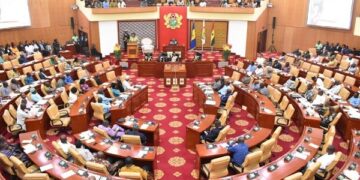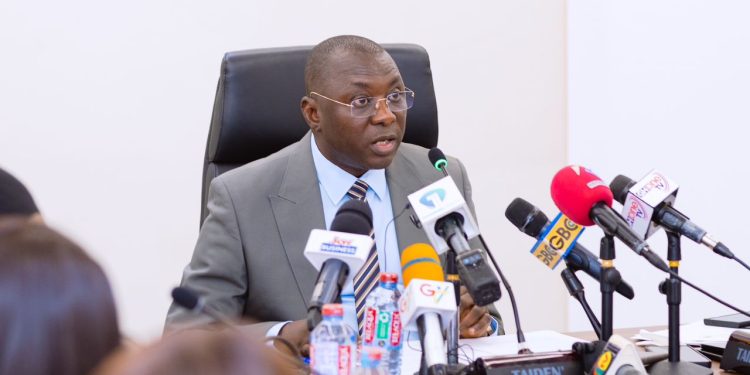Ratings agency, Moody’s has indicated to upgrade Ghana’s credit rating following the country’s Eurobond exchange.
The New York-based firm has issued a statement indicating that it has completed a periodic review of Ghana’s ratings, including its long-term issuer ratings of Caa3 for local currency and Ca for foreign currency.
These ratings, it said, reflect the government’s ongoing debt restructuring under the G20 common framework initiated in December 2022.
It further said that the restructuring of local currency debt, excluding Treasury Bills, was completed in 2023.
“The restructuring of foreign currency debt, which constitutes nearly half of Ghana’s total debt, has progressed significantly following announcements in June 2024 regarding a Memorandum of Understanding on official sector debt and an agreement in principle with bondholders”.
All ratings to be aligned at higher level
It continued that upon completion of the restructuring, all ratings are likely to be aligned at a higher level, albeit within the Caa-rating category, given the liquidity constraints typically following a default event.
“While the IMF programme supports fiscal consolidation and funding access due to Ghana’s relatively robust institutional capacity, which allows it to comply with programme conditionality, still-high inflation and tight monetary conditions will remain key credit challenges,” noted Moody’s.
On June 24, 2024, the Ministry of Finance announced an agreement in principle with bondholders’ representatives on the terms for restructuring $13.1 billion of Eurobond debt, which accounted for 21% of Ghana’s total debt in 2023. Under this agreement, bondholders would forego around $4.7 billion in principal without state-contingent triggers.
This agreement followed a Memorandum of Understanding (MoU) on June 12 between the Finance Ministry and the Official Creditor Committee (OCC) to restructure $5.4 billion of official sector external debt. The IMF confirmed on June 28 that both restructurings are consistent with its programme parameters. However, the OCC has yet to confirm that the bondholder agreement is comparable in debt treatment to the MoU.
Moody’s assessment of Ghana’s economic strength at ‘ba2’ balances the country’s growth potential in the oil and non-oil sectors against its small size and low wealth levels. The ‘caa2’ institutions and governance strength rating primarily reflects very weak fiscal and monetary policy effectiveness, which led to unsustainable government debt and the need for debt restructuring.
Ghana’s fiscal strength rated ‘ca’
Ghana’s fiscal strength is rated ‘ca,’ indicating very weak debt affordability and a very high debt burden, though the ongoing debt restructuring is expected to improve these metrics. Moody’s also highlighted Ghana’s susceptibility to event risk at ‘ca,’ driven by elevated government liquidity risk due to high gross borrowing requirements and limited borrowing options.
The outlook for Ghana remains stable, reflecting the ongoing foreign currency debt restructuring, with expected losses for bondholders aligning with the current ratings’ loss-given-default range. Moody’s hinted that a rating downgrade is unlikely given the recent progress on foreign currency debt restructuring and the agreement’s terms with bondholders, which align with current ratings.
However, if the agreement does not proceed, it could derail the debt restructuring process, potentially leading to downward pressure on both local and foreign currency ratings. Moody’s emphasized, “We will very likely upgrade the local currency and foreign currency ratings after the exchange of the Eurobonds.”
The rating agency added that the agreement reached on June 24 provides substantial debt relief to the government, complementing the relief from earlier local currency debt restructuring. The restructuring of official sector debt will bring additional, as-yet-unknown, liquidity relief. Post-restructuring, Ghana’s ratings are likely to be higher, still reflecting liquidity constraints.




















































































